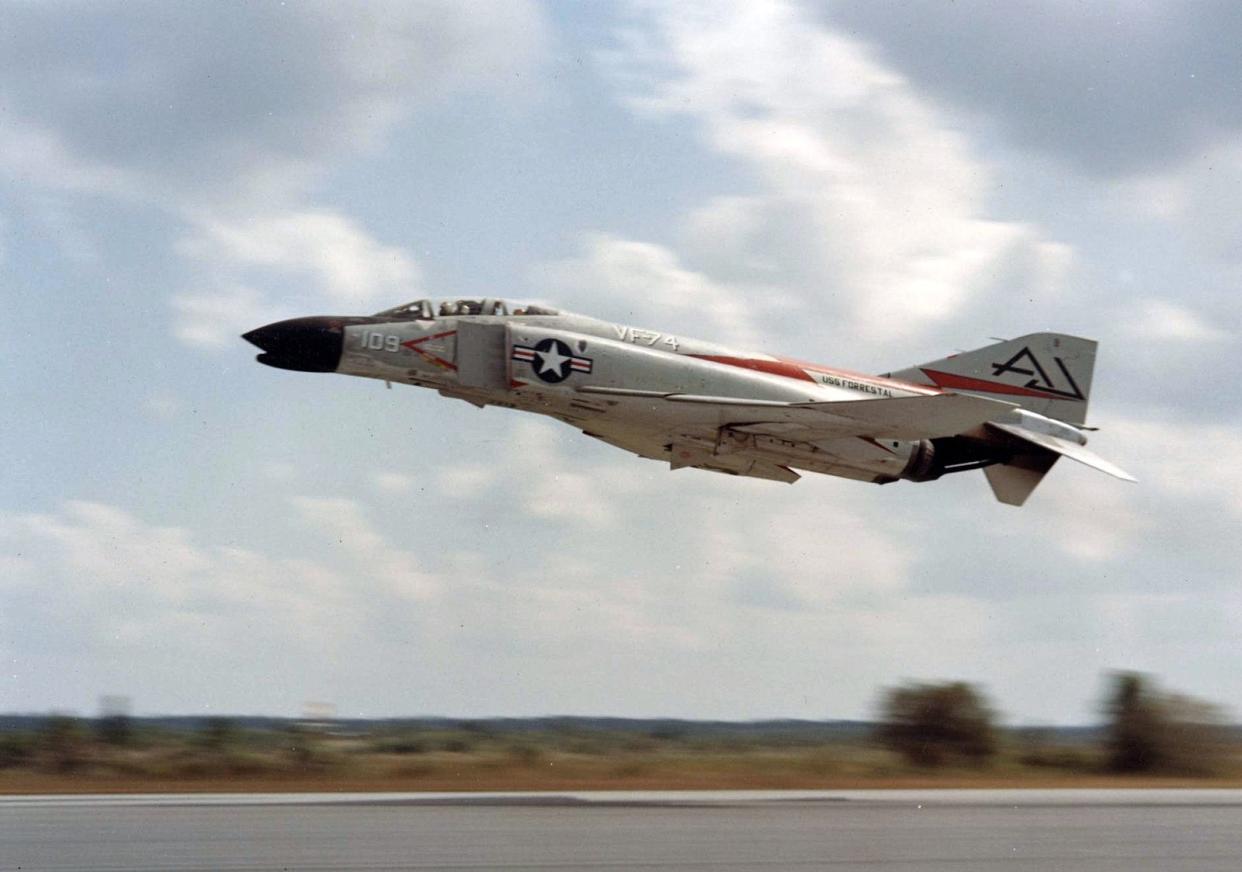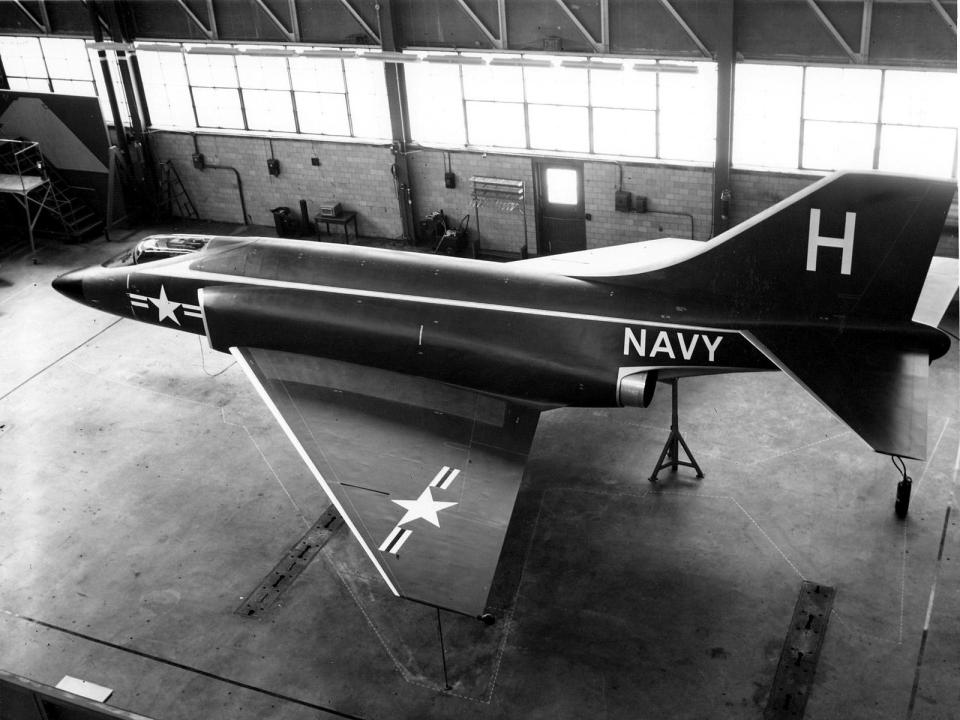This 'flying brick' could fly fast enough to melt its paint

Airplanes define grace and agility. Their sharp lines or contoured surfaces speak to their speed and utility. Well, unless their an ugly duckling like the F-4 Phantom II, a plane so ungainly that pilots called it the "flying brick." But that "flying brick" had a lot of power so it could lob a massive amount of ordnance at enemy targets, so much power that it could burn away its own paint.
Development of Navy jet fighters
The U.S. Army Air Forces and the Air Force entered the jet age with the P-59 Airacomet and P-80 Shooting Star. The early pursuit fighters featured jet engines but were otherwise lackluster. American jet fighters really hit their stride with the F-86 Sabre, a hero of the Korean War and early Cold War.
But U.S. Navy development took place more slowly. For most of the Korean War, it still flew the F9F Panther, a second-generation jet fighter with mostly straight wings. Pilots flew it admirably and achieved a good record, especially against the outdated North Korean Air Force, but the emergence of the F9F Cougar, with its swept wings, greatly improved the situation for the Navy.
Still, the Navy needed a robust fleet defender that was fast, could carry a large payload, and could outclass enemy jets at altitude. The F8U Corsair won the next contract. But the McDonnell company hated their loss of the contract, and they dug in deep to turn their failed entry for the 1953 selection into a winner for the Navy.
The road from F3H Demon to F-4 Phantom II
The Navy had a few concerns about the F3H, a plane that they purchased a few of in 1952 but then dropped for the Vought F8U. McDonnell swapped out the engine, improved the angles, made it larger, and re-thought the weapons.
The Navy showed interest, but it told the company that it wanted a ground-attack plane. So McDonell went back through its weapons, focusing on bombs and cannons. Then, the Navy came back and said, "Actually, make it a long-range interceptor."
Instead of spitting out their drinks and asking, "Are you serious!?" the designers let out a long sigh, lit cigarettes, put on a pot of coffee, and re-thought the weapon load-out and other details one more time. The plane got radar and space for four Sparrow III air-to-air missiles.
Frustrated designers considered calling it the F4 Satan but settled on F-4 Phantom II. With a few more tweaks and improvements, the resulting two-seat fighter could cross Mach 2 in level flight, carry eight tons of ordnance, and climb to altitude faster than anything it would face.
It was, umm, ugly, according to most pilots, though. But with two turbojet engines, they were still willing to climb inside and experience the insane acceleration.

A pilot burns off his paint
British naval pilot Jonathan Whaley took the Phantom for a ride. He'd heard rumors that the Phantom couldn't actually cross Mach 2, and took it for a test.
He had the crew remove all of the external pylons, stalls, and anything else that would slow it down. He took it up to altitude, threw on full afterburner, and slowly descended as he flew forward as fast as he could. The acceleration and top speed impressed him all the way down to 500 feet above sea level.
"So we came storming right down to sea-level supersonic at about 500 feet, eventually, and brought it back," he said. "Climbed out, said, 'Aircraft is fully serviceable, thanks very much. You can take it away.' Got a phone call from the engineer saying, 'What the F have you been doing to this aeroplane?' So I said, 'Why?" and he said, 'Come and have a look at it.' And I came back, and the thing had got so hot all the paint on the leading edge of the wings had all burnt off and the aircraft needed a total respray."
Yup, he really had flown so fast that he burned off his own paint.
The F-4 Phantom II went on to have a long and storied career with over 5,000 jets serving in militaries across the globe, including the U.S. Navy and Air Force.

